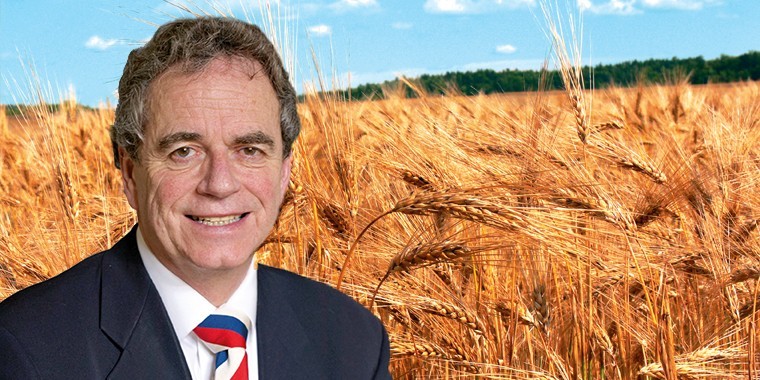With lots of political, financial and coronavirus uncertainty still affecting the markets, coupled with relentless Chinese demand and a few ongoing world weather concerns, the UK grain and oilseed markets remain firm. I won’t be at all surprised if Brexit is not fully resolved when I write my next article in December. After all we have only had four years of it, so why not go up to New Year’s Eve?
It’s no longer the big issue in the market place that it was. Looking at the differential between UK and EU markets, these have narrowed lately, which suggests that a deal of sorts has been done to allow tariff-free trade between the UK and EU to carry on after 31 December. Even if sterling strengthens as a result of this, it does not mean imported wheat or maize will be offered any cheaper than it is now. Stronger currency would reduce the value of the one commodity we do still have to export, which is barley.
Due to good planting weather around the world and in the UK, winter plantings in many areas are complete. There are some parts of Norfolk and Suffolk where late sugar beet activity has meant wheat planting is still behind, and the same applies to some heavy land in the Oxford and Northampton areas. Generally, however, in lighter land areas wheat is fully planted and is looking good. Increases of 20% are estimated, but in many cases it’s 100% better than last year at this stage!
Before anyone starts talking about ‘wall to wall wheat’ for harvest 2021, it’s worth remembering that we still have about the same amount of this season to get through as we have already seen. It’s a long way until next August. Yes, the wheat market has ticked up to more market highs lately, but that doesn’t mean it cannot go higher yet, before next harvest.
The trade has been arguing about whether we had nine or ten million tonnes of wheat from last harvest, but that’s history now. In my view, the next most important wheat tonnage target will be the 14.5 million tonnes which we will need from the 2021 harvest. If we get this plus our usual carry in, we should be self-sufficient in wheat for 2021/2022. Realistically you won’t be feeling confident about that until June, July or even August!
So those who have been forecasting a post-Brexit falling off in wheat values – with the current £33 per tonne difference between old and new crop narrowing – could yet be in for a shock as that may not happen until August. We don’t have the real updated import figures for wheat and maize into the UK. They looked light at the end of September, with wheat at 710,000 metric tonnes and maize at 613,000 metric tonnes. So there is a lot still to come in. I hope it has been pre-bought as I’m not quite sure where the feed wheat and maize would come from if you had to start buying it now. Believe it or not, maize is still the cheapest food stuff in the world, but not in the UK where its priced at £200 ex store in the north west. Against that, wheat at £180 and barley at £140 does not look so expensive.
While the world has been pre-occupied with coronavirus, China has carried on replenishing its grain, protein and oil stocks. It has also been re-building its pig herd at the rate of 35% per year.
They say when you have a leg amputated you can still ‘feel’ it’s there for some time! It must be the same with China. They have not actually bought any American maize since 14 October but the trade still thinks they are behind every price spike! On soya there are rumours that China intends to switch out of US soya into Brazilian or conversely switch from palm oil to bean oil. Whichever, they really have the international trade guessing. It’s turned its attention to French new crop barley which has firmed that market. What should be a well-informed source is suggesting that China may need 33 million tonnes of maize in 2021, rising to 55 million tonnes in 2023; now that would change the dynamics of the corn market!
We are already into the 18-month cycle of marketing next year’s crop. If we learned anything from this year it’s that there is no rush to sell next year’s crop at this stage, especially with once-in-a-lifetime events like Brexit between now and then. Also, when forward selling the quantities need to be smaller and in line with the development of your crops.




